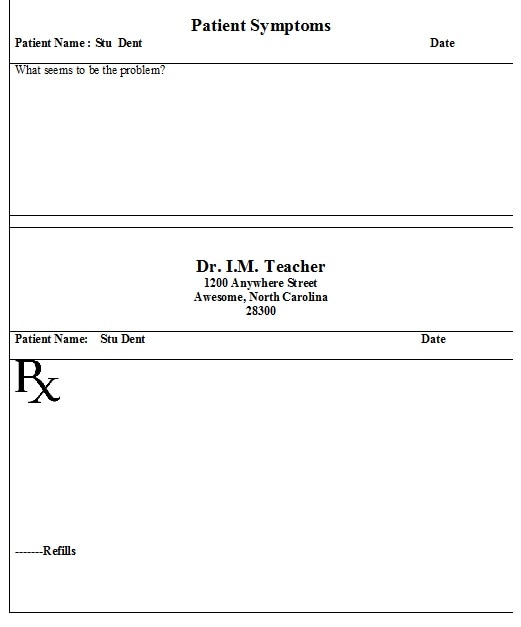35. PRESCRIBED SOLUTION (Discussion, Writing)
Description: This protocol is a symbolic way to look at symptoms of a problem so that students can “prescribe” ways to fix it.
Application: This is a problem and solution activity.
Process: Pose a general problem to students. After a brief discussion, allow students to write down a specific symptom of the problem. Redistribute the symptoms. Tell them to individually write a “prescription” for the very specific symptom. Allow students to share some of the answers and encourage others to add to the discussion. If there are time concerns, write one symptom on the “What Seems to Be the Problem,” Symptom Checklist (addendum below) so that students concentrate on just the solutions. (Example: Small tax base is the overall problem. Urban blight and crime are symptoms of the problem. The prescribed solution could be financial incentives for businesses to move into the city.)
Description: This protocol is a symbolic way to look at symptoms of a problem so that students can “prescribe” ways to fix it.
Application: This is a problem and solution activity.
Process: Pose a general problem to students. After a brief discussion, allow students to write down a specific symptom of the problem. Redistribute the symptoms. Tell them to individually write a “prescription” for the very specific symptom. Allow students to share some of the answers and encourage others to add to the discussion. If there are time concerns, write one symptom on the “What Seems to Be the Problem,” Symptom Checklist (addendum below) so that students concentrate on just the solutions. (Example: Small tax base is the overall problem. Urban blight and crime are symptoms of the problem. The prescribed solution could be financial incentives for businesses to move into the city.)
Reference and/or for more information:
35. Prescribed Solution
Thetford, A. (2011). The Prescribed Solution. Cross Creek Early College.
35. Prescribed Solution
Thetford, A. (2011). The Prescribed Solution. Cross Creek Early College.

